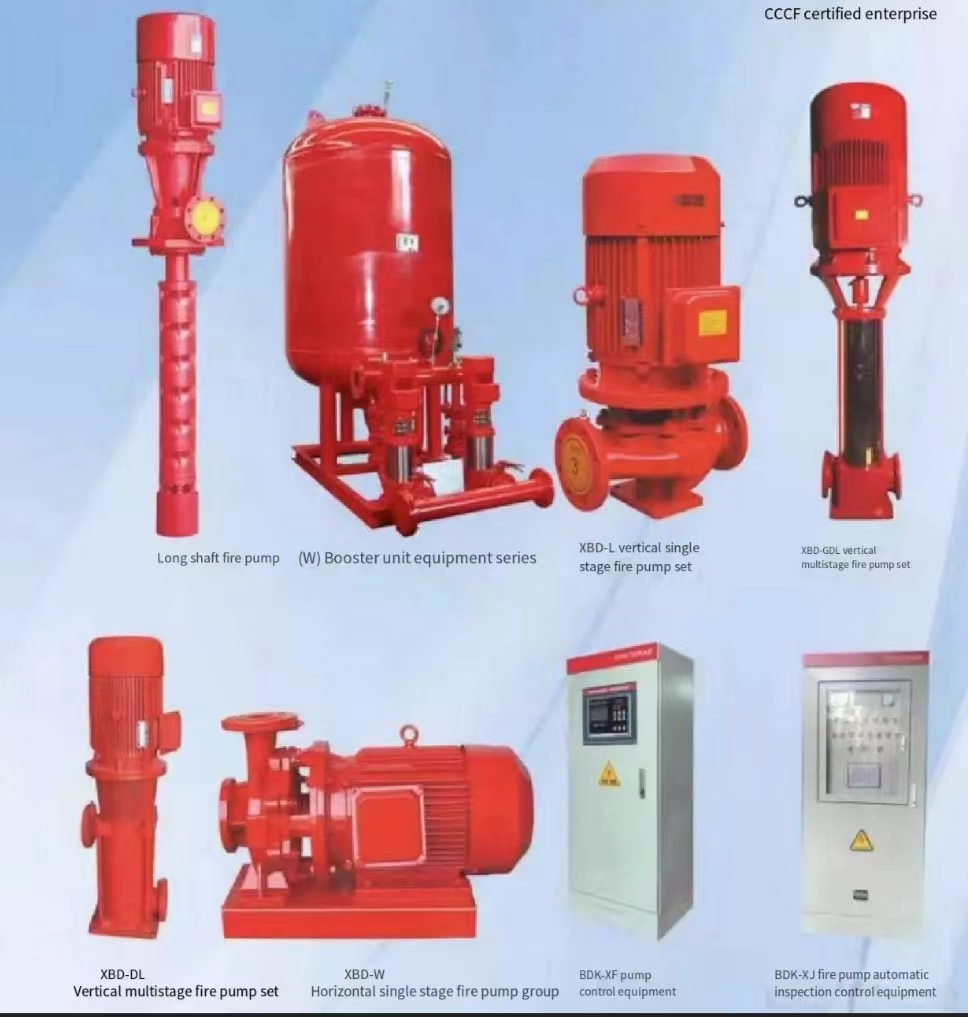The main classification and characteristics of fire pumps
Fire pumps have been widely used in daily firefighting. Many people lament the power of fire pumps but are also dazzled by the wide variety of fire pumps. So, what are the characteristics of fire pumps?
1. Main categories
1) Classification by use:
1. Unpowered fire pump: A fire pump without a power source that relies on the rotation of the impeller to transfer energy to the liquid.
2. Vehicle fire pump: a non-powered fire pump installed on the chassis of a fire truck.
3. Marine fire pump: a non-powered fire pump installed on ships, offshore working platforms, and water working environments.
4. Engineering fire pumps: fire pumps used in fire hydrant systems, water sprinkler fire extinguishing systems, foam fire extinguishing systems and other engineering sites.
5. Low-pressure, medium-pressure, and high-pressure fire pumps: classified according to different rated pressures. The rated pressure of low-pressure fire pumps is not greater than 1.6MPa, the rated pressure of medium-pressure fire pumps is between 1.8MPa~3.0MPa, and the rated pressure of high-pressure fire pumps is not more than 1.6MPa. Less than 4.0MPa.
6. Water supply fire pumps, stabilized pressure fire pumps, foam liquid supply fire pumps, deep well fire pumps, submersible fire pumps, etc.: These fire pumps are designed according to specific application scenarios.

2) Classification by composition:
Fire pump set: A fire pump with a power source, generally consisting of a set of fire pumps, power source, control cabinet and auxiliary devices.
2. Characteristics
1. The fire pump has a compact structure, small size and beautiful appearance. Its vertical structure determines that the installation area is small, and its center of gravity coincides with the center of the pump feet, thereby enhancing the operating stability and service life of the pump.
2. The suction inlet and discharge outlet of the pump are both horizontal, which simplifies the connection of pipelines.
3. The multi-stage type can be installed as needed. The suction port and the discharge port can be installed in the same direction or in different directions of 90°, 180°, and 270° to meet different connection occasions.
4. The pump pressure can be increased or decreased according to the needs, and the outer diameter of the impeller can be cut to meet the requirements without changing the installation area, which is not available in other pumps.
5. The pump rotor has small winding, smooth operation, small vibration, low noise and long service life.




